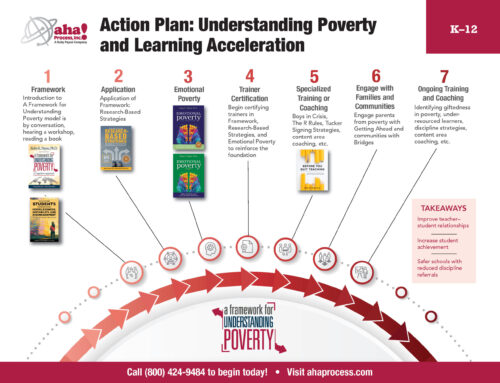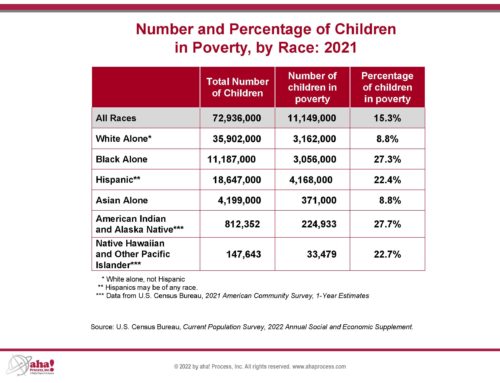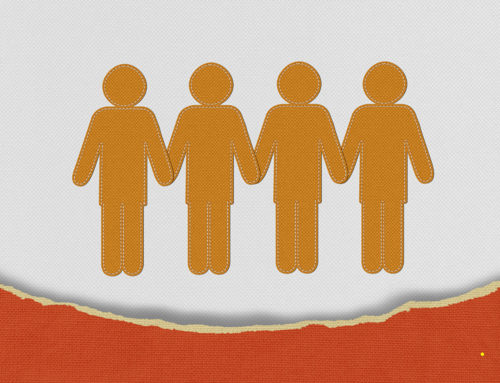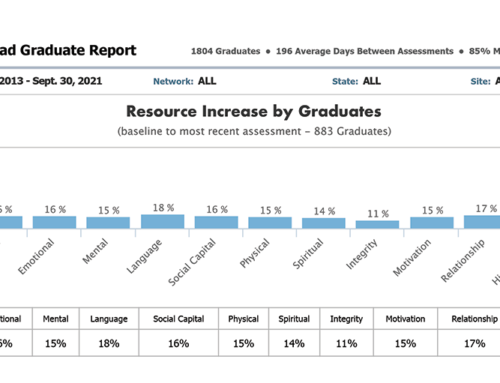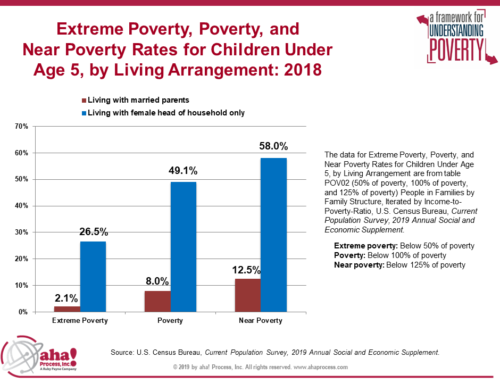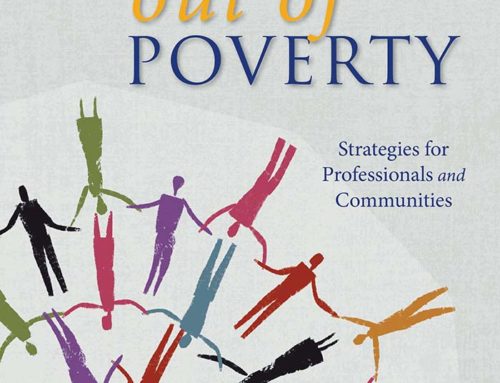
Because of COVID, many individuals, families, and communities are moving to greater instability. There is a great reluctance on the part of people who have been in the middle class to admit that their resource base is becoming unstable. But even more so, it is difficult to know how to manage dwindling resources. In my book A Framework for Understanding Poverty, the continuum from poverty to wealth is defined as “the extent to which you have resources.”
RESOURCES
FINANCIAL
Having the money to purchase goods and services.
LANGUAGE
Being able to speak and use formal register in writing and in speech.
EMOTIONAL
Being able to choose and control emotional responses, particularly to negative situations, without engaging in self-destructive behavior. This is an internal resource and shows itself through stamina, perseverance, and choices.
MENTAL
Having the mental abilities and acquired skills (reading, writing, computing) to deal with daily life.
SPIRITUAL
Believing in divine purpose and guidance.
PHYSICAL
Having physical health and mobility.
SUPPORT SYSTEMS
Having friends, family, and backup resources available to access in times of need. These are external resources.
RELATIONSHIPS/ROLE MODELS
Having frequent access to adult(s) who are appropriate, who are nurturing to the child, and who do not engage in self-destructive behavior.
KNOWLEDGE OF HIDDEN RULES
Knowing the unspoken cues and habits of a group.
COVID has decimated many of these resources simultaneously. As adults begin to assess the reality of their situation, most go through the five stages of grief as outlined by Kübler-Ross. These five stages are denial, anger, bargaining, depression, and acceptance. A person tends to move back and forth along this continuum.
FINANCIAL RESOURCES: The first thing that happens is that hope and choice are replaced with fear and a sense of scarcity. When fear and scarcity come into one’s thinking, the brain is less able to seek options or see possibilities. The negative “parent voice” takes over the internal conversation with the self. For adults who have never experienced unemployment, insufficient funds to pay the mortgage, or the need to sell things for cash, there’s considerable confusion because the knowledge base isn’t available to know what the choices are. Furthermore, in middle class it’s usually seen as a personal failing. COVID has lessened some of that sting. Making things worse, credit cards often are used as a short-term borrowing mechanism to avoid the possibility of losing one’s house, which then exacerbates the financial issues.
Middle class generally makes its decisions about time and money against these three factors: work, achievement, and material security. When you have lost your job, you have lost two of the three decision makers—work and material security. It then impacts your identity: Who are you if you don’t have work? If you cannot keep your house? If your material security is breached? Then how do you make decisions? Furthermore, the two rules about money that middle class uses are now out the window: (1) “I don’t ask you for money, and you don’t ask me,” and (2) “If you borrow money, you have to pay it back.” Personal pride and the deeply ingrained hidden rules about money are now challenged. Furthermore, it’s typically taboo in middle class to tell people you’re in financial trouble. Middle class has another hidden rule about personal money, and it’s simply that you don’t talk about it. So asking a middle-class person to participate in a group sharing session about finances usually isn’t going to happen—particularly for the men because male identity in middle class is, first and foremost, about being a provider.
Adults are moving through the stages of grief as the resource base becomes less predictable and stable. COVID has caused both job losses and salary cuts. Three times in my marriage of 31 years, my former husband lost his job because of recessions. I can tell you from personal experience that it’s not only financially difficult, but also emotionally devastating. It impacts identity, self-worth, and personal value. The stages of grief are so palpable that you can touch them on a daily basis. Furthermore, the resource base that you worked so hard to develop erodes before your eyes—much faster than it took to develop it. Even if the words are there, you can’t talk about it every day. Anxiety is the cousin of fear. Anxiety produces cortisol, which makes anxiety increase. Less is said every day, and certain topics are avoided. Eventually, each person goes to their own corner to worry and to work through the fears—ALONE.
EMOTIONAL RESOURCES: COVID has exacerbated the alone part and has stressed emotional resources significantly. All emotional well-being is based in safety and belonging—and COVID has jeopardized both.
Human beings need touch and socialization. Social isolation is one of the most damaging health determinants. It is as deadly as smoking and leads to early death. It is particularly difficult right now for teens and young adults. Their identity, brain development (social dominance, social cognition, risk and reward analysis) and moral development all come from being in contact with peers. In fact, the rate of teenage suicide during COVID is the highest it has ever been.
Emotional resources have also been stressed if you are forced to share a household with someone who you decide you do not like or someone who is abusive. Divorce rates have spiked, as well as domestic violence.
When emotional resources diminish, so do relationships, role models, and support systems (friends and family who help you in times of need). Relationships become strained. Support systems often cannot be accessed. Particularly now, if you are hospitalized, no one can be there with you.
Your resource base further erodes. You feel alone.
SPIRITUAL RESOURCES: The spiritual resources of hope and optimism tend to be replaced with fear, scarcity, and disbelief. How can God do this? Why do people die? Why me? Anxiety becomes a constant companion. In the research on resiliency, spiritual resources are a key component of being able to endure hardship.
MENTAL RESOURCES: As resources really begin to diminish, it becomes almost impossible to plan. There is documented research about how COVID produces brain fog (whether you are on Zoom or not). In the book Scarcity, the authors document that when anything in your life becomes scarce (like time, or money, or food), the stress it puts on the brain lowers IQ by 13 points. It is so hard to focus, indecision dominates, there is a constant “what if” internal dialogue (rather than “what is”), and planning becomes almost impossible.
Eventually one feels “caged,” and the need to lash out may increase. Lashing out can be directed at others or yourself.
How the adults deal with the stress of COVID will impact how their children deal with it.
WHAT CAN YOU DO?
- All of us orient ourselves to daily life through space, time, and ritual. For example, I get up at 5 a.m., use the bathroom, make coffee, and meditate/pray/journal. Then I check my email. All of these things involve space, time, and ritual. Routine calms and orients people. It helps me “get my head on” for the day. I can tell a huge difference in the day when I do this.
- COVID will not last forever. It will either be more normalized and negotiable, or we will have a vaccine. It is not a war that we do not know when it will ever end. Every morning I have added one more step to my morning ritual—I pretend for 10 minutes that there is no COVID. I make plans about what I will do and where I will travel when COVID is over. It is so much fun, and for 10 minutes every day, life is normal.
- I have used it as a learning opportunity—about myself, others, what is important, and the meaning of life. I have been doing a lot of reading. With every loss is a gain. What are the losses and what are the gains? Every human being has wounds. If a person cannot integrate an experience and heal from it, they become bitter and angry, which can take the happiness and joy from them for the rest of their life. When I feel sorry for myself, I am reminded of this quote: “I was angry because I had no shoes. Then I met someone who had no feet.”
- Find someone or something to love. Recently I got an email with this question—What do you say to someone who tells you no one loves them? I said, “Tell them to find someone to love.” Having someone to love is more important in the social determinants of health than being loved. That is one of the reasons that volunteering is such a powerful tool for moving individuals beyond their current situation.
- Create a future story. Go to Mind Movies and make a video of your future story and watch it every day.
CONCLUSION
When I was principal of an elementary school, a sixth-grader was determined to come to school the morning after his father was killed in an auto accident at 2 am. A neighbor brought the boy to school, and the neighbor said to me, “I don’t understand why he insisted on coming to school.”
I said to the neighbor, “I do. It’s the one place in his life that is still the same, that is predictable and where he knows what is going to happen. There’s a routine. The rest of his life is up for grabs. He needed to know that one place in his life is stable.” I took the boy into my office and said to him, “I can’t bring your life before your father died back for you. But I can help you cope. Go on to class. If you need to leave, tell your teacher to let you come back to the office—and then you and I can figure out how to handle the rest of your day.”
How do you move on during and after disruption and tragedy? Sometimes it simply means putting one foot in front of the other. And sometimes it means simply standing and holding a hand until the event is over.


